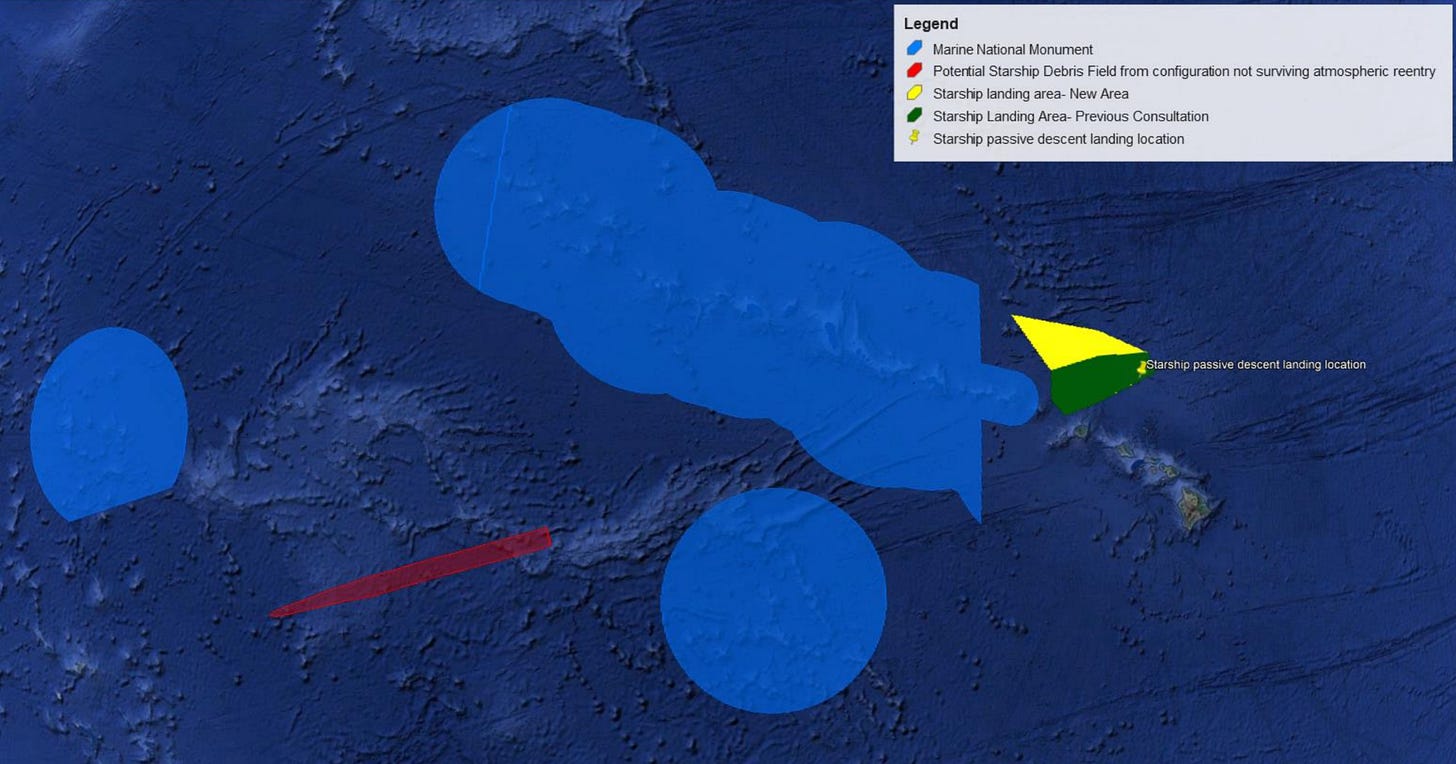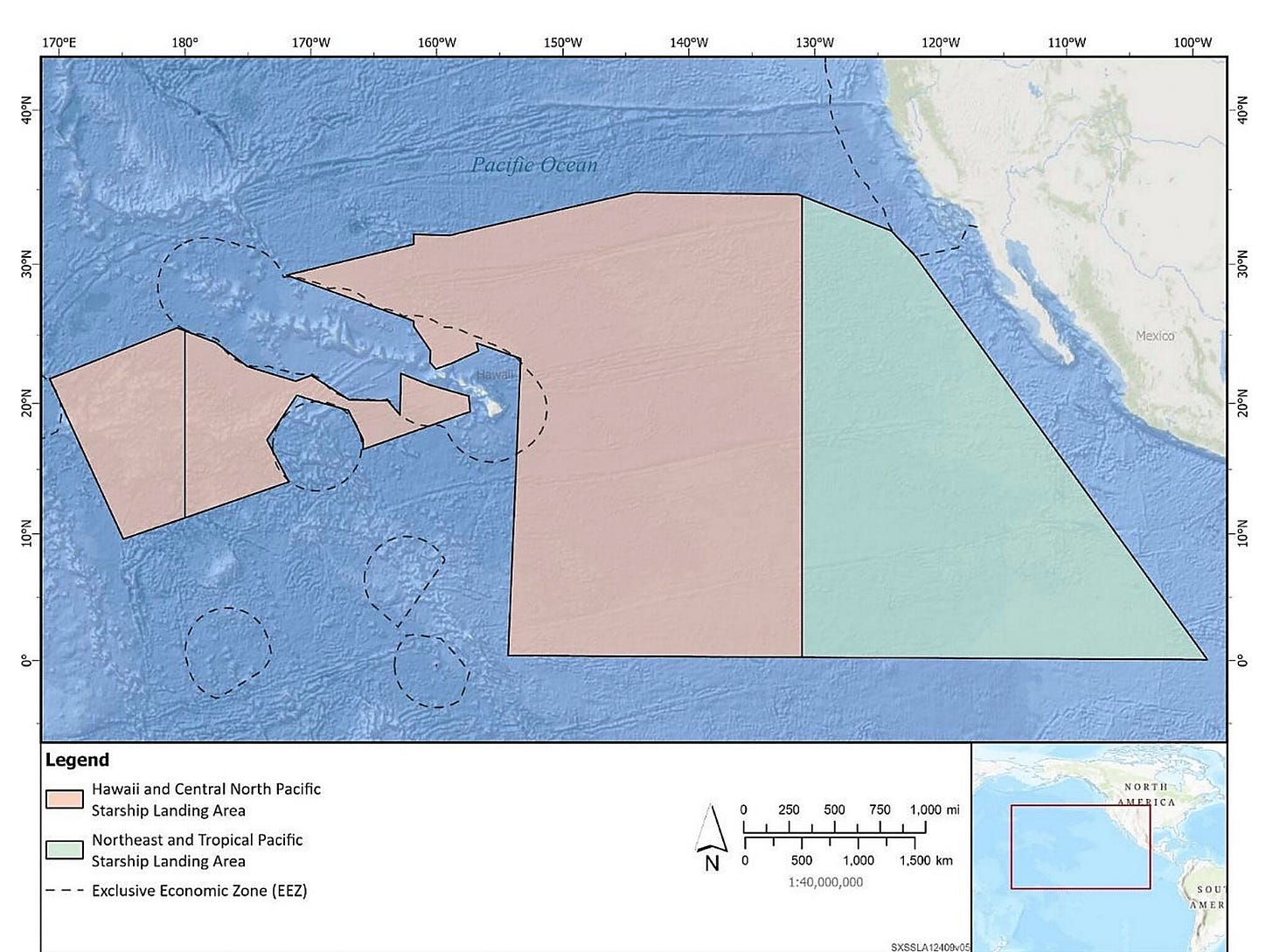Oppose Space X using Hawai’i as a dumping ground
In Elon Musk's new proposal, environmental damage and animal endangerment is imminent
Originally written for UH Manoa student paper, Ka Leo O Hawai’i.
Space X, Elon Musk's space tech company, is proposing to federal authorities a new landing ground for ships that don't make it back to earth intact: by having them instead land in the Pacific Ocean.
Musk wants to dump his trash in the Pacific for his billion dollar spaceship. Not only in the Pacific Ocean, but in dangerously close proximity to the 582,570 square-mile Papahānaumokuākea Marine National Monument off of Kauai.
Just earlier this month on January 2nd the National Oceanic and Atmospheric Administration announced Papahānaumokuākea as America’s 18th national marine sanctuary, which is now the largest sanctuary in the National Marine Sanctuary system. The sanctuary is home to millions upon millions of animals unique to the Hawaiian islands, including coral, fish, birds, mammals, flora, and fauna that deserve to be protected and not endangered even further with this proposal.
“Many of the islands and shallow water environments are important habitats for rare species such as the threatened green turtle and the endangered Hawaiian monk seal, as well as the 14 million seabirds representing 22 species that breed and nest there. Land areas also provide a home for four species of bird found nowhere else in the world,” says the sanctuary site.
If endangering animals and marine life isn't enough, it's also crucial to note the cultural significance of this area to Native Hawaiians, which Musk is treating as a dumping ground for his space toys.
The NOAA sanctuary website notes the “ significant cultural sites found on the islands of Nihoa and Mokumanamana, both of which are on the National and State Register for Historic Places. Mokumanamana has the highest density of sacred sites in the Hawaiian Archipelago and has spiritual significance in Hawaiian cosmology.”

Another concern of Hawaiian people is fishing in the area. In Texas, where there have been multiple SpaceX landings in the Gulf of Mexico, Texans reported that recreational fishing is vulnerable and fish populations have declined.
Space X is not only a threat to marine life surrounding Hawai’i but also the environment in Texas where Space X is stationed. Their ‘missions’ have scattered debris across wetlands and habitats and destroyed nests of vulnerable shorebirds, among other environmental threats, according to a June 2024 survey by the Coastal Bend Bays & Estuaries Program.
The Federal Aviation Administration's Environmental Assessment for SpaceX noted proposed threats, listing 24 species that would be affected by these launches, from Boca Chica, Texas to Hawai’i. The species list includes 5 different types of sea turtles and birds like the Hawaiian petrel and Newell’s shearwater.
Complaints from surrounding neighborhoods in Texas include visual presence and noise from launches, rocket heat plume, habitat loss, hazardous materials and much more, all which harm the environment and contribute to climate change.

In a complaint filed by the Center for Biological Diversity regarding Space X's environmental impact and lack of accountability of their damage, “[the Center for Biological Diversity] claimed that [Space X] violated NEPA by failing to prepare an Environmental Impact Statement, instead relying on inadequate and unproven mitigation to find that launching the largest rockets known to humankind—which are known to explode and adversely affect surrounding lands that provide essential habitat for migratory birds, including federally protected species—would not have significant environmental impacts.”
When Musk began working with Tesla in 2006 he was a green energy guy, advocating for sustainability to combat climate change. “The overarching purpose of Tesla Motors (and the reason I am funding the company) is to help expedite the move from a mine-and-burn hydrocarbon economy towards a solar electric economy, which I believe to be the primary, but not exclusive, sustainable solution” Musk said.
Which is a far cry from recent quotes from Musk, including: “I don’t know, 50 to 100 years from now, we’re mostly sustainable. I think that’ll probably be okay. So it’s not like the house is on fire immediately” and “The risk [of global warming] is not as high as a lot of people say it is. But I think if you just keep increasing the parts per million in the atmosphere long enough, eventually it actually simply gets uncomfortable to breathe.”
To say nothing of his transphobia and bullying of his own daughter, making X a safe haven for white supremacists in lieu of “free speech”, and the 2024 lawsuit against Musk and Space X where fired employees claim they were fired for raising concerns regarding sexual harassment and discrimination against women, this is not someone who cares about keeping our environments and oceans safe and preserving cultural sites.
This isn't the first time Musk has been held accountable for his environmental damage, and devastatingly enough, likely won't be his last, especially with his government position as leader of Department of Government Efficiency in the White House with the help of his buddy, Donald Trump. For now though, in order to preserve the marine environment around Hawai’i and cultural sites, Space X cannot make Papahānaumokuākea its dumping ground, or who knows what he’ll move onto next.



